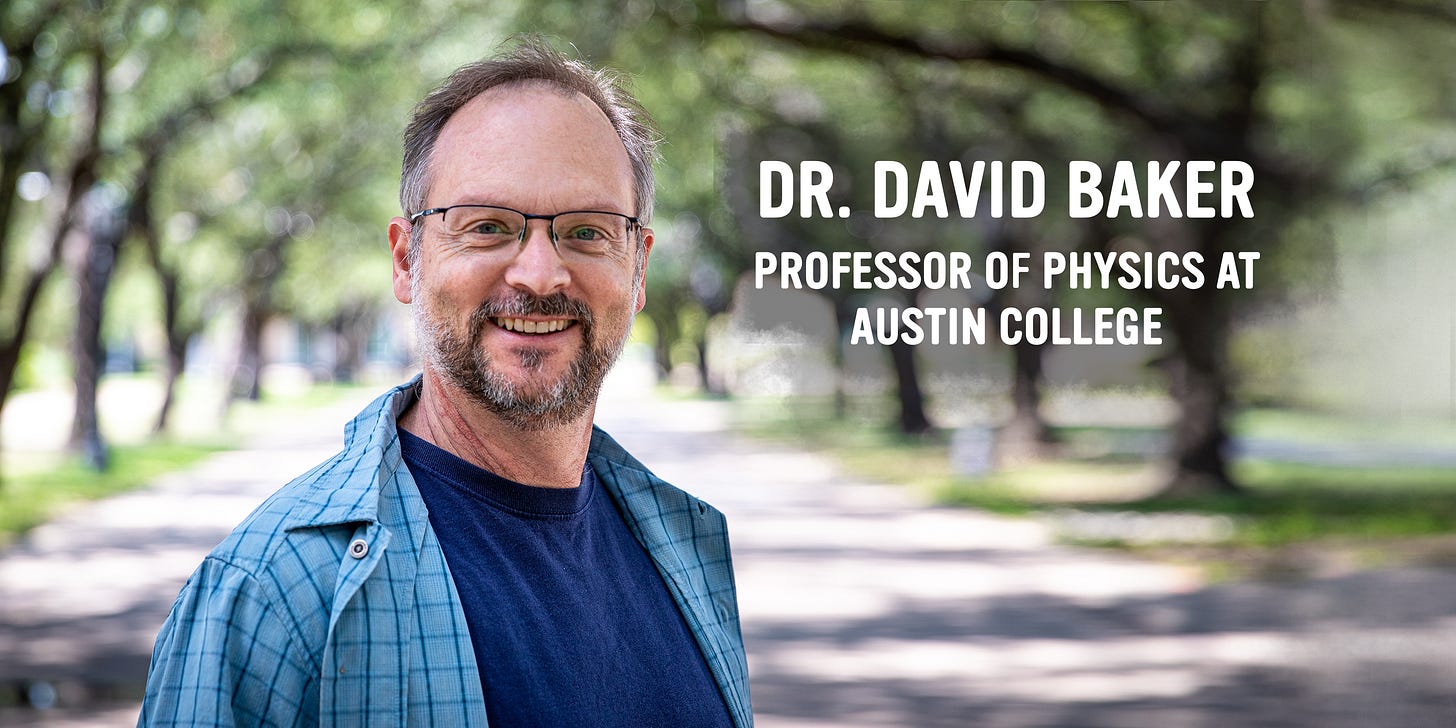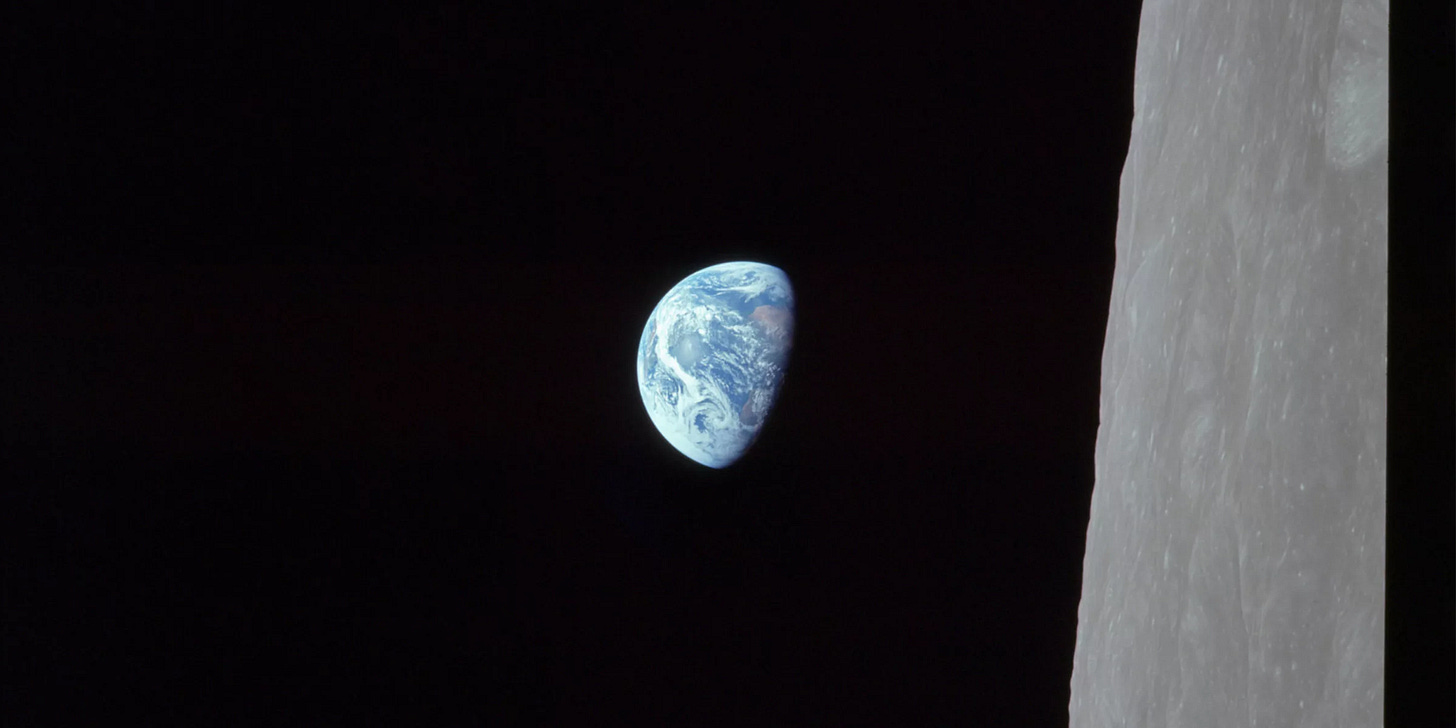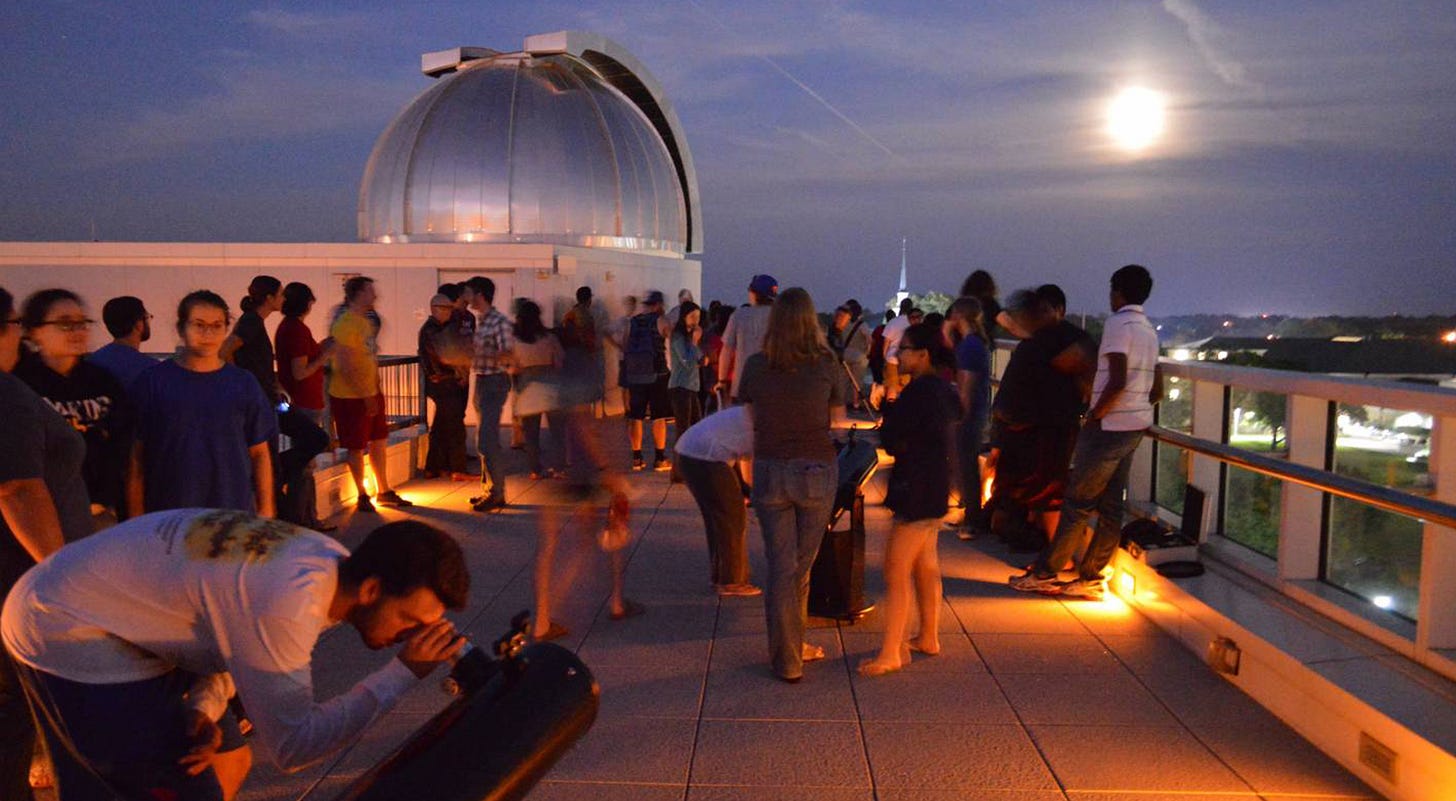The search for Planet B
6,000 exoplanets, but none like Earth – with guest editor David Baker
This week my guest editor is Dr. David Baker, physics professor and co-director of Adams Observatory at Austin College – which is not in Austin but rather north of Dallas, though still in Texas.
I first met David when I gave a climate talk at a local Presbyterian church that he attends, and I was so pleased to learn that David serves as Austin College’s head delegate to the United Nations Climate Change conference. Students, known as Austin College Climate Ambassadors, engage with international climate leaders and inspire climate action back home by “talking about it” with diverse audiences and local stakeholders. How perfect is that?!
As a member of NASA’s Transiting Exoplanet Survey Satellite mission, David has helped discover more than 50 exoplanets – planets outside of our Solar System. He is also the author of The 50 Most Extreme Places in Our Solar System, which landed a coveted spot on WIRED’s GeekDad Gift Guide.
At Austin College, David teaches a popular course on global climate and extreme weather for non-science majors inspired by student questions after watching the disaster movie The Day After Tomorrow. To learn more about David, visit his website here.
Take it away, David!
Throughout the ages, humans have gazed at the points of light in the night sky and wondered, “Is there another Earth out there? Or are we alone?”
Now, with cutting-edge technology and dedicated scientific missions by NASA and the European Space Agency, we are closer than ever to answering these questions. We live in an age of exoplanet discovering, and the search for another Earth is on!
Last week scientists announced the 6,000th confirmed exoplanet discovery. These exoplanets come in a wide variety of shapes, sizes, and climates: scorching hot Jupiter-sized planets, a possible “eyeball planet” with a single ocean surrounded by ice, and a planet with two suns reminiscent of the legendary Tatooine from Star Wars.
As Dr. Natalie Batalha, Project Scientist for the Kepler Space Telescope mission that has racked up the most exoplanet discoveries, said in 2022, “Kepler taught us that planets are common in the galaxy. On average, every sun-like star has at least one planet.” Given that the Milky Way Galaxy has over 100 billion stars, one study suggests that our galaxy could have at least 300 million potentially habitable rocky planets ranging in size from Mars (0.13x Earth’s volume) to Super-Earths (3.4x).
As often happens with scientific discoveries, our view of the universe is always changing. Planets aren’t limited to just our solar system; and learning more about these exoplanets can help us better understand our own Earth and what makes it so perfectly habitable for life.
Now for the less encouraging news – we have not yet discovered a planet just like Earth.
It’s not easy to make a planet like Earth. First, a rocky planet requires a special set of ingredients like iron, silicon, and magnesium along with smaller traces of aluminum, calcium, and carbon. Molecules such as oxygen and water are necessary for the air we breathe and the liquid we drink.
Second, the planet must be the right size – too small, like Mars, and it can’t retain a comfortable atmosphere. Too large, like Super-Earth, and its enhanced gravity could produce a puffy gas planet or thick water world.
Third, the planet must be the right distance from its star for liquid water to flow at the surface, known as the habitable zone. Too close to its star, like Venus, and water boils off. Too far from its star and the planet becomes an ice ball. Earth is in the “just-right” spot, the so-called Goldilocks principle of planetary science.
Finally, the planet must orbit the right kind of star. Our yellow Sun is a middle-aged, relatively quiet star, old enough for planets to form and stable enough to limit planet-altering radiation bursts. Most stars are not this well-behaved.
Out of all six thousand known exoplanets, not one meets these four criteria to be an “Earth.” If we relax the last criterion of “the right kind of star,” only 18 of 6000 exoplanets make the cut. What this work has shown us so far is that Earth is a rare kind of planet.
Of course, better tools will help us find more planets and I expect more discoveries to be made soon by advanced telescopes like the James Webb Space Telescope, with its first direct image of a possible exoplanet. Yet even if a second “Earth” is discovered, it will be so far away that we have no way to get there.
Exoplanet research verifies the accuracy of the popular climate slogan, “There is no Planet B!” Our planet is our only home, and that’s why it’s so important that we take care of it.
Recognizing that Earth-like planets are uncommon (and even if we find one, there’s no way to get there right now) should inspire us to protect our unique planet. We are stewards of a special place in space.
You can make a difference by advocating for Earth and space science. Science matters. By investigating the runaway greenhouse on Venus, noted astronomer Carl Sagan laid the foundation for a deeper understanding of Earth’s greenhouse effect. Many United Nations climate decisions recognize “the importance of the best available science for effective climate action and policy-making.” Consider supporting organizations such as the Union of Concerned Scientists and Astronomers for Planet Earth.
Visit a nearby observatory or planetarium with family and friends. It will be a fun outing, one that you will talk about for a long time. During our “star parties” at Austin College’s Adams Observatory, one of my favorite things is when visitors view a celestial object – perhaps Saturn’s rings or a globular cluster with 100,000 stars – for the first time through the big telescope. They catch their breath and involuntarily exclaim, “Wow!”
Awe-filled experiences like these help us feel part of something larger than ourselves and more connected to nature. As psychologist Dacher Keltner, author of the book, Awe: The New Science of Everyday Wonder and How It Can Transform Your Life, asserts, “Awe is going to be critical to fighting climate change.”
You don’t have to make a long trek to experience this “wow” moment. There are lots of places you can stargaze. Want to join an astronomy club? Click here to find one near you. Or just go outside in your backyard or a nearby park tonight and gaze at the night sky like our ancestors have done for generations.
As you’re gazing up, pick a star and imagine a planet orbiting it – this planet is probably not like Earth! Now find another star. Maybe it has multiple planets, maybe even a rocky planet but with a climate inhospitable for humans. Pick another star, and another, and another. Chances are they don’t have an Earth, either.
After you have finished star-hopping, look back down at your favorite planet. Hear the orchestra of crickets chirping, smell the sweet scent of oxygenated air, and feel the Goldilocks “just right” temperature on your skin.
There’s no place like home.
👋 Katharine, here!
Thank you, David, for this inspiring perspective!
My own undergraduate degree (and my first five published papers) are in astrophysics, so I can verify that it provided me with the perfect basis to understand what makes our home planet so unique, and so important.
To learn more, watch David’s TEDx AustinCollege Talk: The Most Extreme Life Form in our Solar System. You can follow him on LinkedIn and Bluesky as well as read his book, The 50 Most Extreme Places in Our Solar System.
Want to dive deeper into habitable planets? David highly recommends the books Rare Earth by Peter Ward and Donald Brownlee and How to Find a Habitable Planet by James Kasting. You can also create your own habitable planets with the physics-based space simulator Universe Sandbox using this tutorial by YouTuber Space Chip.
October 1 - Raising Hope Conference for the Tenth Anniversary of Laudato Si. I'm honoured to participate in a celebration of hope for our shared hope, led by Pope Leo. Register to view the livestream here.











The path of human endeavour is very far from set, though it could be if we don’t change in the next two generations. Intellect in this galaxy, will be stillborn.
Past philosophers were missing much key knowledge. Mankind has only been building that book of knowledge for a few thousand years, on which these philosophers based their insights. It is far from complete, and deeply screwed by the imagination. We are in the infancy of intellect, and they failed to base their thinking from this perspective. That’s ok, they were very close to the beginning.
For instance. In 1958 the worlds leading astronomer postulated that 1 in a million stars birthed planets. Understand that the entire human belief system, was designed to organize the mind in place and awareness, created through a myth based system before we had facts. Still today, most humans structure their awareness of place off deeply held beliefs, founded in the imagination, and not empirical evidence.
In 2025, we know that every star births planets. And that there are more galaxies, than we thought there were stars in the Universe in 1958. Hundreds of billions of galaxies, holding hundreds of trillions of stars. And now we know that Every Star births planets. Using this vastly broaden pattern recognition can help us to understand the immediacy of our global predicament.
Intellect on planet earth, the id, is a manifestation of Natures Universal intelligence. Now we can postulate this is unfolding in every galaxy.
As in nature, this awareness can be stillborn. Will the human opportunity of intelligence be stillborn in the Milky Way? We will need to change our relationship with the host planet and the complexity of life that is the wellspring of our understanding, if we chose to fulfil the Universal path made present for us.
Nature is the wellspring of our Universal.
Knowledge + Wisdom = Understanding
Who and how many people and experts will call out trump and the sycophants for lying about the climate crisis here on Earth and tell the truth, and then repeat, repeat and repeat. My 6 year old granddaughter is just wondering about her future on our beautiful blue dot.